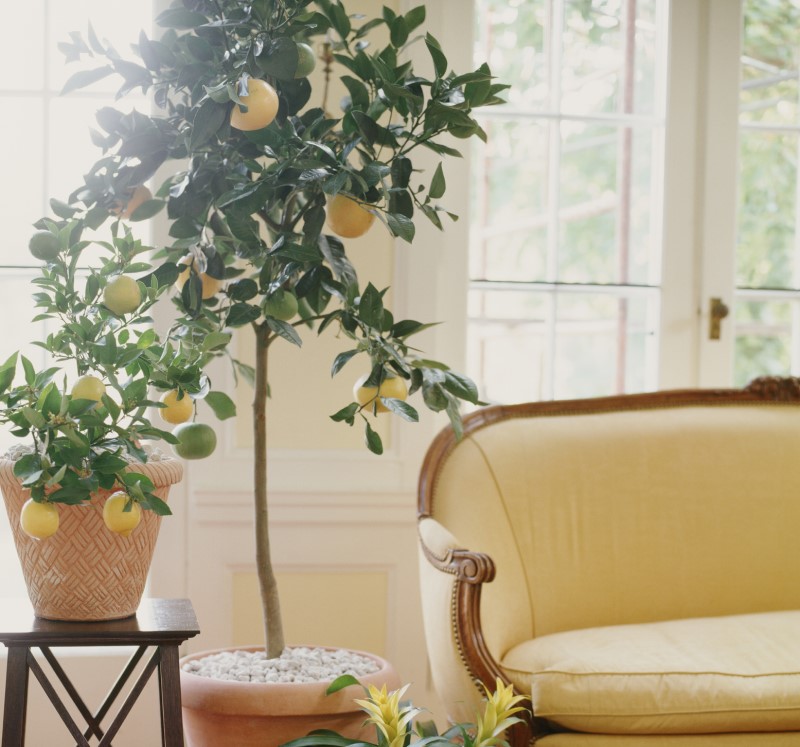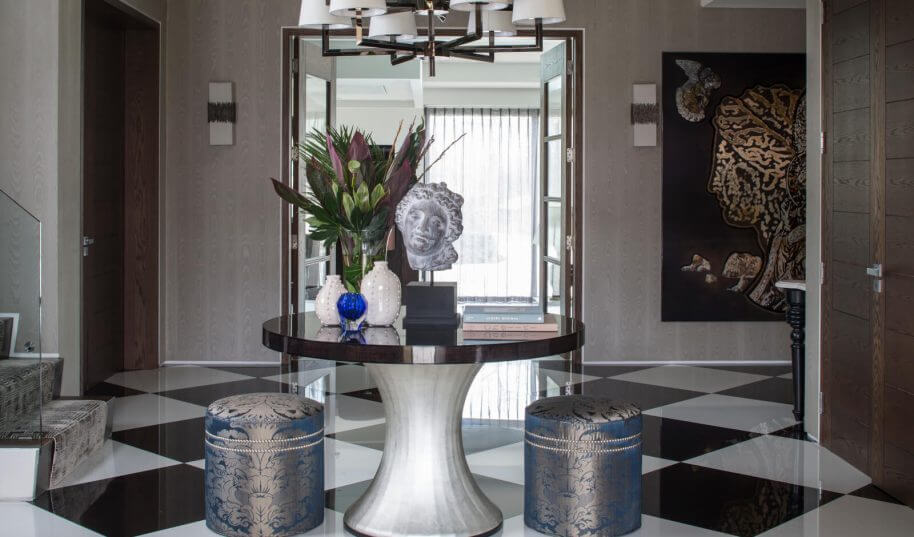Houseplants are the perfect addition for homeowners looking to breathe life into their homes. Not only are plants aesthetically pleasing but it has also been proven that when we create opportunities to connect with nature, we benefit from a host of health-boosting effects, from improved mood and concentration to reduced stress and physical ailments.
Well placed houseplants can add depth and interest and the natural element works well to tie together an interior scheme. Create your own indoor oasis by incorporating a variety of lush foliage, delicate textures, and flashes of colour into your home for a fresh, vibrant feel.
Here are 5 easy to care for houseplants that you can introduce to your home to add some natural beauty.
A lemon tree

If you’re looking for something a little different, try incorporating a lemon tree into the interior design of your home. A fruit bearing plant always adds a lovely pop of colour especially against contrasting green leaves. In addition it will produce a glorious citrus smell, that is particularly noticeable after watering.
In order to thrive lemon trees need lots of sunshine! They need plenty of natural light to produce flowers and later fruit, but keep away from drying radiators and heaters. A light filled hallway is a great spot as they bring colour and decoration into an often-neglected area.
Lemon trees are quite simple to take care of, just make sure they receive enough light throughout the day. It’s crucial that the soil never dries out, so ensure that you water it regularly. With proper care your lemon tree will eventually outgrow your home, but this won’t be for many years and it’s relatively simple to transfer it to your garden.
A kitchen herb garden
If you don’t have a lot of space around your home a herb garden can be a perfect kitchen addition as you are able to completely customise what you grow to suit available space and personal preference.
Whether you are working with a border style or pot-based planting scheme, decide on what herbs you want to grow and how you want to arrange your plants visually. Position shorter herbs such as parsley to the front and make sure that sun-loving herbs such as basil and sage can get plenty of light, slowly increase height order so that you are able to access your selection with ease. Seeds can be brought from garden centres very affordably, or you can skip straight to small starter plants if time is limited.
Herbs are a great starter plant to introduce you to gardening as they’re incredibly easy to care for. They grow best when placed in direct sunlight and require minimal space. A kitchen windowsill is a perfect spot to keep your kitchen herbs within easy reach.
Some herbs can be toxic to pets, so make sure you do your homework as not all are going to be suitable.
Monstera
In recent years, monstera plants have become increasingly popular. Native to tropical rainforests it favours a warm, humid environment making them ideal indoor plants. The monstera is an excellent choice when you’re looking to fill a large space with the large dark leaves adding plenty of drama and texture.
They grew in popularity thanks to their uniquely shaped leaves and hardy nature. Monsteras are incredibly easy to look after and can thrive even in low light. You should never keep a monstera directly in front of a window as they don’t cope well in direct sunlight for prolonged periods. Place your plant where it can receive medium to bright indirect light throughout the day.
If you have small children or pets be mindful to keep your plant out of reach as although immensely beautiful, the leaves are also toxic.
Large cacti
The great thing about cactus plants is that they are extremely low maintenance and can survive with very minimal care. They do best when placed close to south-facing windows as they require a warmer temperature and exposure to plenty of sunlight.
Larger varieties have a striking appearance that can make a bold statement in any room of your home.
Cactus plants are typically non-toxic; however, the sharp spines can be a hazard particularly around small children and inquisitive pets. It is worth checking the toxicity of your cactus, as some varieties do have toxic spines.
Stunning faux plants
Although a real houseplant provides a fresh aesthetic to the home, fake plants can be wonderful alternatives when you are restricted. The quality of faux plants has massively increased over the last few years, so if your lifestyle means you are regularly away from home and could do without the stress of caring for living plants, faux may be the sensible choice for you. Requiring little more than the occasional dust to keep them looking fabulous, they could be your perfect plant partner.
Available in almost any imaginable variety, there is a faux plant ideal for any interior scheme. As they do not need natural light can be placed anywhere around your home and unlike the real deal, they remain completely safe for children and pets.
Work with our team of luxury designers
We’re happy to help provide a design direction to make the most of your interior scheme. Contact us today to discuss your home renovation project.

